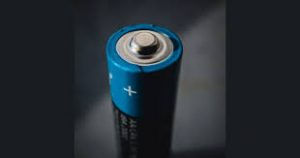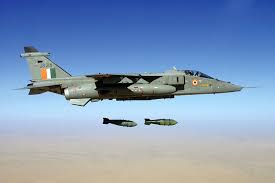Today’s Current Affairs: 10th July 2025 for UPSC IAS exams, State PSC exams, SSC CGL, State SSC, RRB, Railways, Banking Exam & IBPS, etc
Table of Contents
India’s “Battery Passport” System:

India is set to roll out a “Battery Passport” system to give electric vehicle (EV) owners detailed digital information about the batteries in use.
- It is a system to give electric vehicle (EV) owners detailed digital information about the batteries in use.
- The system will digitally record each battery’s specifications — including its source, composition, performance, lifecycle, and supply chain — and embed this data in a QR code.
- A battery passport serves as an Aadhaar identity of sorts, with every battery having a unique ID that provides all information on the product.
- The initiative is expected to enhance safety and quality benchmarks while also boosting India’s EV export potential.
- The system will also play a key role in the upcoming battery-swapping policy, enabling users to retrieve battery details by scanning the QR code printed on them.
- Once the battery passport system is implemented, it will be possible to ensure that cells in any battery are manufactured in the same year.
- Through it, users will get to know about the lifecycle and performance of batteries, which is key considering they account for nearly 40% of the costs of EVs.
Advanced Towed Artillery Gun System:

Indigenously made Advanced Towed Artillery Gun Systems (ATAGS) will replace the vintage and smaller calibre guns, with the Defence Ministry recently calling the project an “exemplary mission mode success”.
- It is a large-calibre gun system with the capability to program and fire future Long Range Guided Munitions (LRGM) to achieve precision and deep strike.
- It has been indigenously designed and developed by the Armament Research and Development Establishment (ARDE), the Pune-based laboratory of the Defence Research and Development Organisation (DRDO).
- The production partners of these ATAGS are two private sector companies–Pune-based Bharat Forge and Tata Advanced Systems.
- It will replace the vintage and smaller-calibre guns and enhance the artillery capabilities of the Indian Army.
- This 155 mm, 52-calibre gun system boasts an impressive range of over 40 km, placing it among the longest-range towed artillery systems
- The gun can fire all types of 155 mm ammunition, including high-explosive, precision-guided, smoke, and illumination shells.
- It boasts an enhanced firing rate of five rounds per minute and can sustain 60 rounds per hour.
- It also has the shoot-and-scoot capability and is also the first of its kind gun which is capable of achieving the shortest minimum range at a high angle.
- The gun is towed by a 6×6 platform, providing excellent mobility across varied terrains.
- Its all-electric drive system ensures higher reliability and reduces wear and tear compared to traditional hydraulic systems.
- The ATAGS is also designed to operate in extreme temperatures.
SEPECAT Jaguar:

The SEPECAT Jaguar aircraft of the Indian Air Force (IAF) crashed near Churu in Rajasthan.
- The SEPECAT Jaguar, fondly called ‘Shamsher’ (Sword of Justice), was a joint venture between the British Aircraft Corporation and the French Breguet Company (now part of Dassault).
- First introduced in 1968, it is a twin-engine, ground-attack aircraft primarily designed for deep penetration strike missions, especially against high-value ground targets in contested airspace.
- It can carry up to 4,500 kg of payload.
- The Jaguar can fly at a maximum speed of 1,699 km/h.
- It can fly 850 km on its internal fuel tanks, and with an external drop tank, the combat range is increased to 1400 km.
- It has a max service ceiling of 46,000 ft.
- The Jaguar is of monoplane design with an aluminium airframe.
- The aircraft is equipped with an in-flight refuelling probe at the starboard side of the front fuselage to execute air refuelling missions even under the worst weather conditions.
- It is equipped with spoilers, air brakes, rudder, double-slotted flaps, slats, critical systems, and a bulletproof windscreen.
- It features an all-digital cockpit enclosed within a glass canopy. The cockpit is equipped with a head-up display, multifunctional display, night vision, and GPS.
- India’s Jaguar Fleet of 40 Jaguars was inducted into the IAF in fly-away condition beginning in 1979 and delivered in 1981.
- Another 100 were license-built by Hindustan Aeronautics Limited (HAL) in 2008.
- Overall, the IAF has inducted about 160 Jaguars of different variants over the years.
- These include the single-seat strike fighter Jaguar IS, the two-seat trainer Jaguar IB, and the naval version Jaguar IM.
- The IAF is the world’s only air force still flying these low-flying fighter bombers. Today, the IAF operates approximately 120 Jaguar jets in six squadrons.
Broadcasting Infrastructure and Network Development (BIND) scheme:

Central government will establish Akashvani kendra in Ujjain under the Broadcasting Infrastructure and Network Development (BIND) scheme.It is a Central Sector Scheme.
- It aims to provide financial support to Prasar Bharati (All India Radio (AIR) and Doordarshan (DD) for expenses related to expansion and upgradation of its broadcasting infrastructure, content development and civil work related to the organization.
- It enables the public broadcaster to undertake a major upgradation of its facilities with better infrastructure which will widen its reach, including in the LWE, border and strategic areas and provide high-quality content to the viewers.
- It also focuses on development of high-quality content for both domestic and international audiences.
- It ensures the availability of diverse content to the viewers by upgradation of the capacity of the DTH platform to accommodate more channels.
- It has potential to generate indirect employment by way of manufacturing and services related to the supply and installation of broadcast equipment.
- The Scheme will increase coverage of AIR FM transmitters in the country to 66% by geographical area and 80% by population up from 59% and 68% respectively.
Draft Petroleum & Natural Gas Rules, 2025:

The Ministry of Petroleum & Natural Gas has released the Draft Petroleum & Natural Gas Rules, 2025, aimed at modernising India’s upstream oil and gas regulatory framework.
Features of Draft Petroleum & Natural Gas Rules, 2025:
- Stabilisation Clause: Protects exploration licensees from future hikes in taxes/royalties by allowing compensation or deductions.
- Third-Party Access: Lessees must declare underutilised pipeline and facility capacity and permit fair access under government oversight.
- Integration of Renewables: Allows solar, wind, hydrogen, and geothermal projects within oilfields, ensuring synergy with decarbonisation.
- Environmental Norms: Mandatory GHG monitoring, carbon capture & storage (CCS) frameworks, and site restoration funds with 5-year post-closure monitoring.
- Data Governance: All operational data will be owned by the Government of India; external use requires prior approval and confidentiality of up to 7 years.
- Adjudication Mechanism: A dedicated Adjudicating Authority (Joint Secretary rank) to resolve disputes, enforce compliance, and penalise violations.
- Contractual Reforms: Revised Model Revenue Sharing Contract (MRSC) and Petroleum Lease formats include provisions for lease mergers, unitisation, and relinquishment.
- Replaces Outdated Laws: To supersede the Petroleum Concession Rules, 1949 and PNG Rules, 1959, and aligns with the amended Oilfields Act, 1948.
Catastrophe Bonds (Cat Bonds):

India’s growing vulnerability to climate disasters has reignited policy interest in catastrophe bonds (cat bonds) as a financial instrument for disaster-risk financing.
- Catastrophe bonds (cat bonds) are insurance-linked securities that convert disaster risk into tradable financial products. They transfer the financial risk of natural disasters like earthquakes, cyclones, and floods—from governments or insurers to global capital markets.
Key Features of Cat Bonds:
- High-Yield Returns: Investors earn higher interest rates due to the risk of principal loss.
- Parametric Triggers: Pay-outs are linked to measurable event thresholds (e.g., wind speed, Richter scale magnitude).
- Independence from Market Risk: Natural hazards are uncorrelated with stock market fluctuations, offering true portfolio diversification.
- Fast Disbursal: Enables quick financial assistance post-disaster, reducing reliance on slow government processes.
Optical Atomic Clock:

An international team of 65 scientists successfully conducted the largest optical clock comparison across three continents, paving the way to redefine the SI unit of time the second using optical atomic clocks.
- An optical atomic clock is a next-generation timekeeping device that uses light waves from atoms (in the optical frequency range) instead of microwaves (as in caesium clocks) to measure time with ultra-high precision.
- Materials Used: Strontium-87 (Sr), Ytterbium-171 (Yb), Ytterbium ions (Yb⁺ E2, Yb⁺ E3), Strontium, 88 ions (Sr⁺), and Indium-115 ions (In⁺).
- These atoms and ions are chosen for their stable electronic transitions, critical for accurate frequency measurement.
- Objective of Optical Clocks:
- To replace caesium-based atomic clocks as the new international standard for defining the second.
- To support high-precision applications in GPS, climate science, space navigation, and radio astronomy.
- To improve global time synchronization with enhanced stability and reliability.
European Union Ministers gave the final green light for Bulgaria to adopt the euro:
European Union Ministers gave the final green light for Bulgaria to adopt the euro on January 1, 2026, making it the single currency area’s 21st member.It is located in the southeastern region of the European continent, occupying the eastern part of the Balkan Peninsula. It is bordered by 5 countries: by Romania in the north; by Turkey and Greece in the south; by North Macedonia in the southwest and by Serbia in the west. It is bounded by the Black Sea in the east.
Gambhira-Mujpur bridge on the Mahi River collapsed in Padra taluka of Vadodara, Gujarat:
Mahi River is one of the major west-flowing interstate rivers of India. It flows through the states of Madhya Pradesh, Rajasthan, and Gujarat. The river is popularly described as “Mahisagar” due to its vastness. It originates in the northern slope of the Vindhya Mountain Range in Madhya Pradesh, at an average altitude of about 500 m above mean sea level.The river flows in the southerly direction of Madhya Pradesh for about 120 km. It enters the southeastern portion of Rajasthan, which is the Vagad region. The river flows through the Banswara district, which comes under the Vagad regi Before entering Gujarat, the river makes a `U` shaped loop in Rajasthan. Finally, the river surrenders itself to the Arabian Sea by a wide estuary near Khambat.The total length of Mahi is 583 km. The total drainage area of the river is about 34,842 sq.km. The Mahi River has a dam on it, namely, the Mahi Bajaj Sagar Dam.
Nistar:
The ‘Nistar’ vessel was delivered by Hindustan Shipyard Limited to the Indian Navy at Visakhapatnam.It is the first indigenously designed and constructed Diving Support Vessel. The ship’s name, ‘Nistar’, originates from Sanskrit and means liberation, rescue or salvation. The warship has been designed and built as per classification rules of the Indian Register of Shipping (IRS). The ship is highly specialised and can undertake Deep Sea Diving and Rescue Operations– a capability with select Navies across the globe.
World Bioproduct Day 2025 and BioE3 Policy:
The Department of Science & Technology (DST), along with BIRAC and iBRIC+, organized World Bioproduct Day 2025, focusing on Equity, Environment, and Economy to highlight the importance of inclusive public participation in biotechnology. The event also reiterated the government’s goal of achieving a USD 300 billion bioeconomy by 2030 under the BioE3 framework. World Bioproduct Day launched in 2021 by the World Bioeconomy Forum, the day aims to promote awareness about the potential of bio-based products in advancing environmental sustainability, climate action, and green innovation by reducing dependence on fossil fuels.
Order of the Most Ancient Welwitschia Mirabilis:
Prime Minister of India was conferred with Namibia’s highest civilian honour, The Order of the Most Ancient Welwitschia Mirabilis, during his state visit to Windhoek. He is the first Indian leader to receive this distinction, marking a milestone in India–Namibia bilateral ties.A prestigious civilian award named after Welwitschia Mirabilis, a rare and resilient desert plant native to Namibia that can survive for over a thousand years. Conferred by: The President of Namibia, currently H.E. Netumbo Nandi-Ndaitwah.
A massive wildfire in Tarragona province, Catalonia:
A massive wildfire in Tarragona province, Catalonia (Spain) has forced over 18,000 people into lockdown, burning nearly 3,000 hectares of forested land. Tarragona is a coastal province in northeastern Spain, forming the southern part of Catalonia. Known for its Roman heritage, agricultural economy, and natural landscapes, it is also prone to Mediterranean wildfires.
- Country: Spain
- Autonomous Region: Catalonia
- Bounded by the Mediterranean Sea, offering a long coastal stretch.
Sarankumar Limbale Wins Chintha Raveendran Award 2025:
Marathi writer and critic Sarankumar Limbale has been selected for the Chintha Raveendran Award for 2025. The award includes a cash prize, a memento, and a citation. It will be presented on July 26 at K.P. Kesavamenon Hall in Kozhikode, during a special event held in memory of Chintha Raveendran. The award celebrates Limbale’s contributions to literature and social thought.The Chintha Raveendran Award is given each year to a writer who has made a strong impact in the field of literature and social issues. This year’s recipient, Sarankumar Limbale, is known for his writings that focus on Dalit identity, equality, and human rights.
Das Paise ka Postcard Book Brings Back the Postcard Era:
A heartfelt book titled “Das Paise ka Postcard” by S.N. Ahmed, a retired Indian Army officer, was recently launched in Hyderabad. The book reflects on a time when postcards were the main way people stayed in touch. It was released by well-known actor and director Vinay Varma. The book also carries plans to be performed as a play, bringing back the warmth of handwritten communication.The book “Das Paise ka Postcard” is a touching tribute to the days when people wrote postcards to stay connected. According to S.N. Ahmed, postcards were once the only way many families communicated with their loved ones. People would eagerly wait for them, read them again and again, and even store them safely for years. The book brings out the emotional value of handwritten messages, especially in a world now ruled by instant digital messages
Harsh Malhotra Opens India Energy Storage Week 2025:
India Energy Storage Week 2025 began with a special session in Delhi on July 10, 2025, where Minister of State Harsh Malhotra highlighted India’s strong push toward green mobility and electric vehicles (EVs). Speaking at Yashobhoomi, he explained how the government’s schemes and policies are helping India move toward a cleaner and more sustainable transport future.MoS Harsh Malhotra underlined the Modi government’s commitment to supporting eco-friendly transport. He said that schemes like PM e-Drive and FAME-II are helping in the development of a strong EV manufacturing ecosystem in India. The aim is to reduce pollution, promote clean energy, and make public transport better for everyone.




